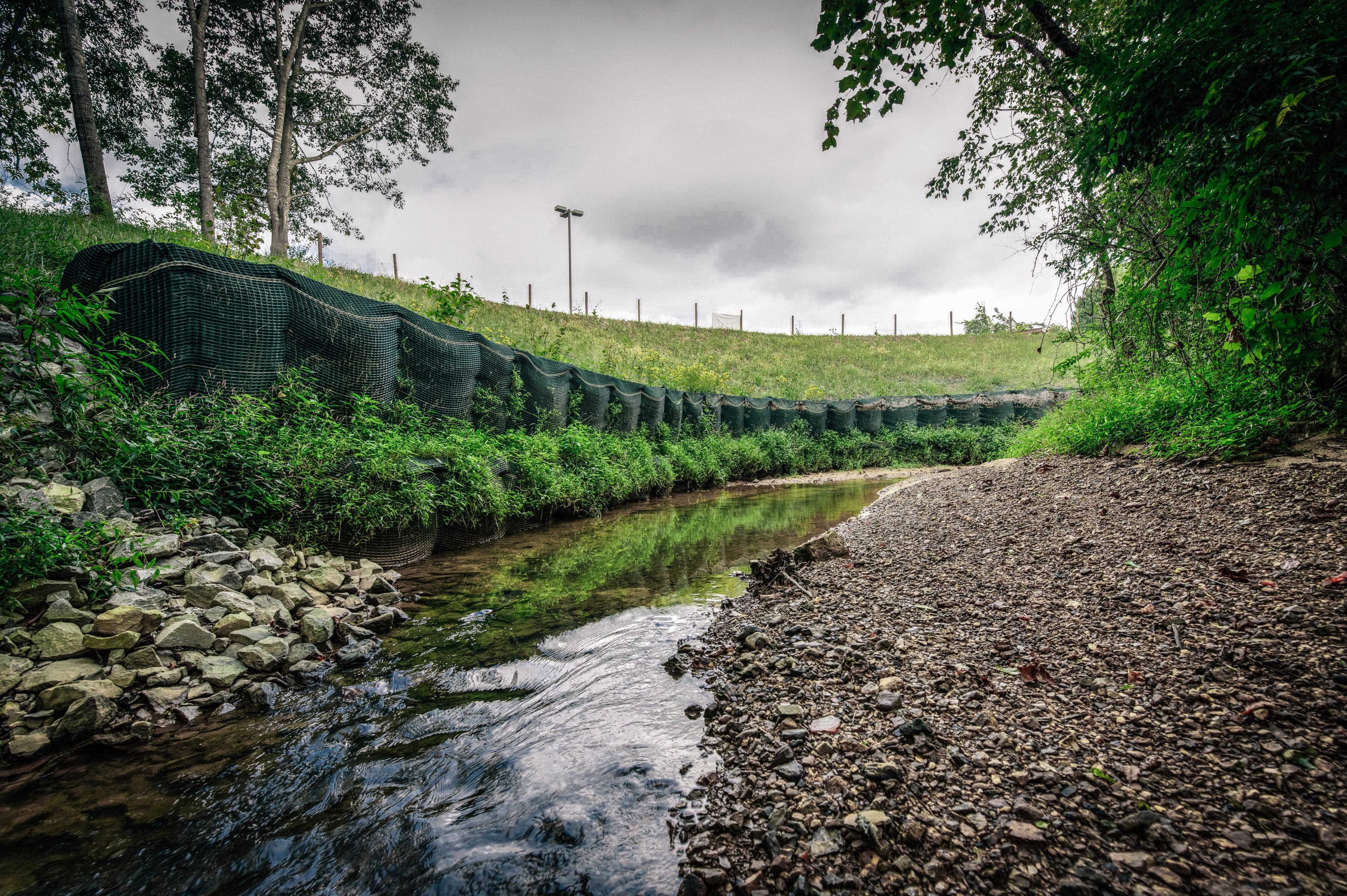How to combine engineered earth armoring with greywater treatment
Resilient water management by combining greywater recycling with engineered earth armoring for irrigation, erosion control, and increased property value.
A technical overview of reinforced soil slopes (RSS) in geotechnical engineering, focusing on design, erosion control, and innovative materials for slope stability.

How to combine engineered earth armoring with greywater treatment
Resilient water management by combining greywater recycling with engineered earth armoring for irrigation, erosion control, and increased property value.
How can geosynthetics help energy transition?
Geosynthetics accelerate agricultural outputs and improve resilience by optimizing water management through enhanced irrigation efficiency and providing structural stability to agricultural infrastructures like dams and reservoirs.
How can geosynthetics accelerate agriculture outputs and improve resilience?
Geosynthetics accelerate agricultural outputs and improve resilience by optimizing water management through enhanced irrigation efficiency and providing structural stability to agricultural infrastructures like dams and reservoirs.
Geosynthetics – the innovation gaps and opportunities
Solmax identifies innovation opportunities in geosynthetics, aiming to advance industry standards through ecological focus and technological integration, ensuring sustainable development and enhanced performance.
Flexible lining materials in channels and slopes
Flexible lining materials stabilize channels and slopes, providing effective erosion control and structural reinforcement. Explore their benefits and applications, and their importance in environmental management and infrastructure stability.
How to engineer a gravity wall system
Engineering a gravity wall system involves using the weight of materials like rock-filled gabions or concrete blocks to counteract earth pressures, with design options including vegetated facades and innovative materials for enhanced stability.
How to stablize transportation infrastructure with minimal carbon impact
Innovative techniques, such as the use of PROPEX Armormax, stabilize transportation infrastructure with minimal carbon emissions, improving slope stability and safety while promoting environmental sustainability.
Understanding typical values, MARV and minimum values
Typical values, Minimum Average Roll Values, and minimum values ensure material consistency and meeting design specifications for quality control in how geosynthetics are tested and verified against industry standards.
How to test geotextile tensile strength
The tensile strength of geotextiles is evaluated using three ASTM-designated tests: grab tensile test, wide-width tensile test, and tension creep tests, providing crucial data for product quality and application suitability.
How to combine systems for optimal performance
The integration of PROPEX Scourlok at the slope's base and PROPEX Armormax above maximizes erosion control in vulnerable areas, ensuring long-term stability and vegetative growth for effective landscape management.
Stabilizing the eroding Monogahela riverbank
The Monogahela riverbank is stabilized using PROPEX Armormax and B2 anchors to prevent slope failures, enhancing the safety and resilience of adjacent industrial facilities and infrastructure.
How resilient flood mitigation protects the Louisiana levee system
Louisiana's levee system is protected by resilient flood mitigation strategies, such as the PROPEX Armormax system, which reinforces levees against storm surges and reduces the risk of breaches, proven effective during hurricanes like Ida.
How to securely connect PROPEX Pyramat with traditional engineering solutions
PROPEX Pyramat can be effectively combined with traditional engineering solutions such as concrete, rock riprap, and gabions using specialized connection techniques that ensure stability and durability in various installation scenarios.
How the I-65 was rehabilitated with a sustainable paving interlayer
Interstate 65 was rehabilitated with Petromat® Enviro™, a sustainable paving interlayer, which improved road longevity and moisture barrier integrity, and is fully recyclable, supporting Indiana DOT’s commitment to sustainable infrastructure practices.
Long-term solutions for climate change resilience
Long-term climate resilience is being bolstered by integrating sustainable infrastructure and utilizing federal grants for mitigation projects that focus on enhancing protection against natural disasters and adapting to climate changes.
How to estimate erosion control material quantities for slopes and channels
Proper estimation of erosion control materials like blankets and mats for slopes and channels is crucial to avoid underestimation that leads to project delays and increased costs. The approach includes accounting for 3D measurements, overlaps, and wastage
How to drive earth anchors in adverse conditions
Successful installation of earth anchors in adverse conditions involves choosing the right anchor type and size for specific soil characteristics, such as frozen or rocky terrains, ensuring both safety and effectiveness.
How to install Engineered Earth Anchors in shallow depth installations
The installation of engineered earth anchors in shallow depths involves using specific tools like hydraulic drills and ensuring correct drive steel insertion for effective ground stabilization and erosion control.
How to decode “or equal” in a bid specification
Or equal" clauses in bid specifications allow bidders to propose alternatives to specified products, ensuring competitive bidding and suitable substitutions based on agency-approved equivalency in character, quality, and performance.